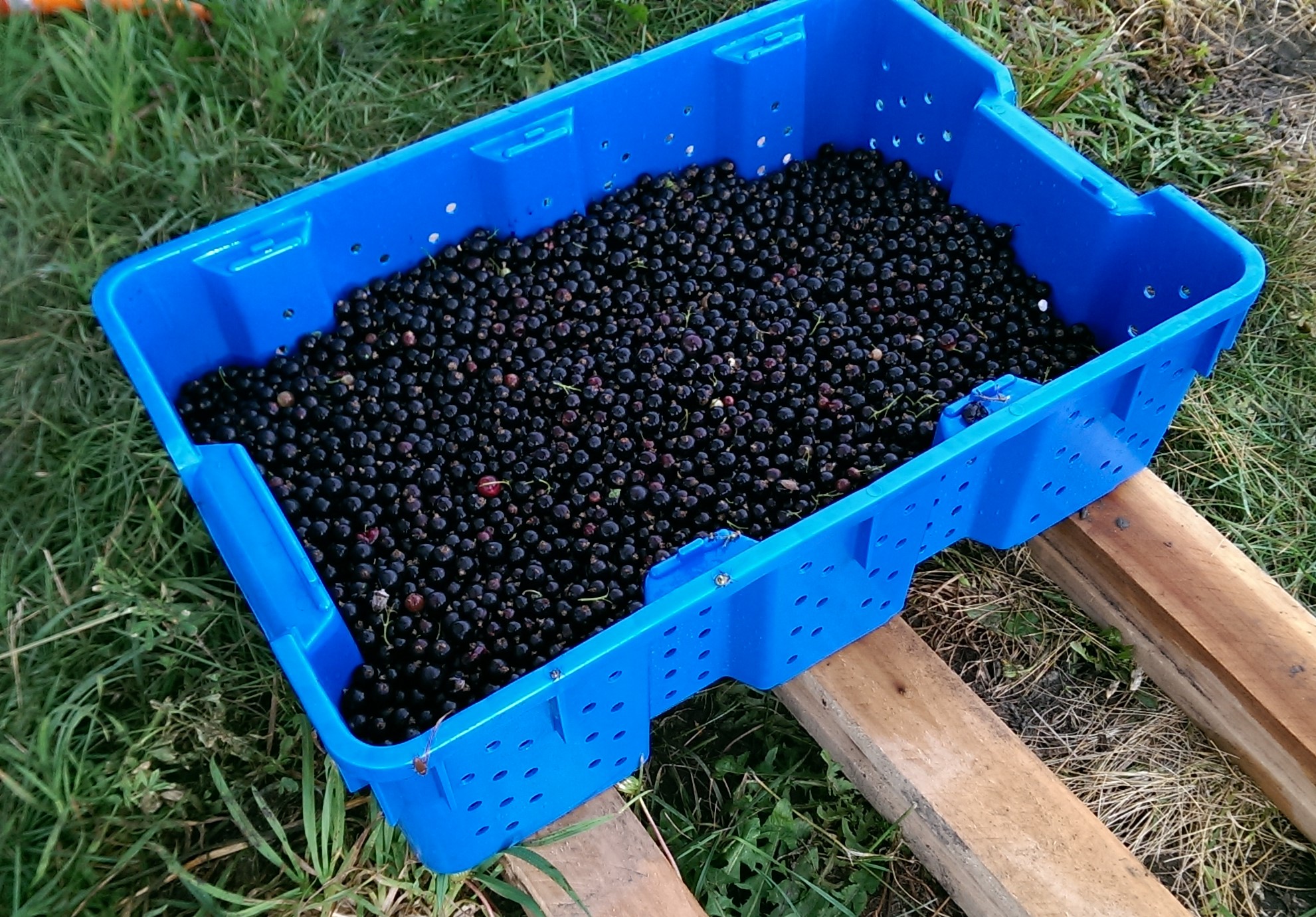Black currant harvest Nature Keepers 2019
Posted by Mark Ballering on Mar 1st 2020

It's 5:30 AM early in July. We head east from Urbana, Illinois, take the first exit, and drive past corn, soybeans, a lone house, and more corn and soybeans. Our destination is Kevin's black currant planting, now at the 3 year mark. Folks are arriving, an impromptu wash station is getting set up with Kaitie, the farm manager, organizing it. Unlike the acres and acres surrounding, grass and rows of four foot high currant bushes are sheltered by a perimeter of young trees. Each row is marked as part of Kevin's research and the variety is noted. A specialized harvesting machine is attached to the tractor. By 6:15 the show starts, the sun gets higher, and the temperature creeps up. A harvesting crew heads to the first row, stopping to make adjustments. Soon the first 35lb totes of just picked fruit come to the wash station on their way to the cooling trailer-- a makeshift trailer with a room air conditioner jutting out the side. The first of hundreds of berry batches go into the sanitizing rinse, to the clean water rinse, to the final rinse, to the person bagging, and into the cool trailer.

As the morning proceeds, Kaitie and company make adjustments to the workflow, make impromptu fixes, and make notes for next time. The harvesting crew is refining their processes as well. Totes of fruit are arriving faster and faster. The temperature is climbing, which is the big threat to the ripe fruit. As the persons at the first wash station step, Jennell and I transfer berries as fast as we can, dip them, rinse them, and pass them along to John and Kaitie. As the day goes on and the trailer slowly fills with 20lb bags of ripe, black currants, my thoughts drift back to April in Wisconsin and the 600 little bushes we planted in the corner of an 40 acre, two year old prairie restoration. Will they grow well in a prairie? How will harvesting go if it is prairie between the rows of currants rather than mowed grass? These are some of the questions Nature Keepers is about, and can sustainable, perennial agriculture and restoration of native communities come together to produce food for people and income to do restoration work? Is this a creative way to provide clean water, hold carbon, and provide a place they call home for our native plants and animals? Perhaps these small round berries, that make tasty products, can magically make the world a bit better.. But right now, here comes Kevin with another stack of totes!
At the end of the day, there are a few thousand pounds of black currants in the trailer. I commit to buy most of them for Nature Keepers, but I don't have a finished product yet. Months later, the first product, Original Black Currant Spreadable Fruit Preserve, is ready. It is “fruit-forward”-- black currant fruit is the main ingredient and the minimal amount of sugar needed is added. And that is it, no preservatives, no added pectin. The flavor is intense, there are whole berries and fresh fruit pulp all in a spoon-able sauce, and the color is deep purple-blue. Like other dark blue fruits, black currants are high in anti-oxidants. Of course, we have to try it out as a companion for other foods. Unlike some jams, this preserve works well with soft cheeses, yogurt, ice cream, as a sauce for chicken and pork, and the exploration goes on.

Pollinator House
Thank you for allowing me to share this with you. I hope that when you take that first bite of Nature Keepers Original Black Currant preserve, you will taste a bit of July sun and, perhaps, sense prairie flowers swaying in the wind. With your support, we can create Places They Call Home.
Here is more about the farm: Black currant farm Nature Keepers
